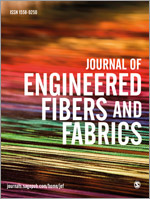
Journal of Engineered Fibers and Fabrics
Scope & Guideline
Transforming the Fabric of Material Science.
Introduction
Aims and Scopes
- Sustainable Fiber Development:
Research on the use of natural and recycled fibers, including the development of eco-friendly materials and processes that minimize environmental impact. - Advanced Fabric Technologies:
Exploration of innovative fabric technologies, such as smart textiles, nanofiber applications, and functional fabrics with specific properties like antimicrobial, moisture-wicking, and thermal regulation. - Composite Materials:
Investigation into the integration of fibers into composite materials for enhanced structural performance, including studies on mechanical properties and durability. - Textile Manufacturing Processes:
Analyses of various textile manufacturing processes, including weaving, knitting, and nonwoven technologies, focusing on optimization and efficiency improvements. - Textile Characterization and Testing:
Methodological advancements in the characterization and testing of textile materials, focusing on mechanical, thermal, and comfort properties. - Data-Driven Approaches:
Utilization of machine learning, AI, and data analytics in textile research, particularly for defect detection, quality control, and predictive modeling.
Trending and Emerging
- Smart Textiles and Wearable Technology:
An increasing number of studies focus on the development and application of smart textiles that integrate sensors and electronics for monitoring health and performance. - Sustainable and Circular Textiles:
There is a growing trend towards research on sustainable practices, including recycling, upcycling, and the use of biodegradable materials in textile production. - Nanotechnology in Textiles:
Research involving nanomaterials for enhancing textile properties, such as antibacterial effects and improved durability, is on the rise. - Machine Learning and AI Applications:
The application of machine learning and artificial intelligence in textile defect detection, quality control, and process optimization is becoming increasingly significant. - Bio-Based and Natural Fiber Composites:
Research is trending towards the use of bio-based fibers and composites, reflecting a broader interest in sustainable materials sourced from renewable resources. - Functional Performance Assessment:
There is a heightened focus on evaluating the functional performance of textiles, particularly in terms of comfort, durability, and application in specific environments.
Declining or Waning
- Traditional Textile Dyeing Methods:
Research focusing on conventional dyeing techniques is decreasing, with a shift towards sustainable and innovative dyeing methods that reduce water and chemical usage. - Simple Fabric Aesthetics:
Studies on basic aesthetic qualities of fabrics, such as color and pattern without functional applications, are becoming less frequent as the emphasis shifts to performance and functionality. - Basic Mechanical Properties of Common Fibers:
Research on the fundamental mechanical properties of widely used fibers is less prevalent as more complex interactions and applications are being explored. - Non-Functional Textile Applications:
There is a noticeable reduction in studies related to textiles that do not provide specific functional benefits, reflecting a growing preference for textiles with added functionalities.
Similar Journals

Advances in Civil Engineering Materials
Pioneering Sustainable Solutions for Modern EngineeringAdvances in Civil Engineering Materials, published by the American Society for Testing and Materials, is a leading journal in the field of civil engineering, specializing in the innovative applications and developments of materials used in construction and infrastructure. With an ISSN of 2379-1357 and an impressive lineup of contributions from renowned researchers, this journal serves as a pivotal platform for disseminating groundbreaking research from 2012 to 2024, currently enjoying a category quartile ranking of Q2 across multiple disciplines including Ceramics and Composites, Civil and Structural Engineering, and Materials Chemistry. Though it operates under a subscription model, the valuable insights and advancements presented in the journal have a significant impact on both academia and industry practices. Researchers, professionals, and students are invited to explore the evolving landscape of civil engineering materials, gaining critical knowledge to drive innovations and contribute to the sustainability and safety of architectural endeavors.
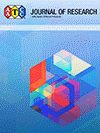
AATCC Journal of Research
Unveiling the latest trends in materials science.AATCC Journal of Research is an esteemed publication at the forefront of materials science, focusing on the latest advancements in the fields of materials chemistry, polymers and plastics, and process chemistry and technology. Published by SAGE Publications Inc. in the United States, the journal disseminates high-quality research that shapes the future of textile and materials innovation through rigorous peer-reviewed studies. With a notable impact factor indicative of its scholarly influence, AATCC Journal of Research stands out in the Q3 quartile rankings across its categories for 2023, making it a significant platform for emerging research and technological advancements. The journal's commitment to excellence is reflected in its extensive coverage from 2014 to 2024, and it is an essential resource for researchers, professionals, and students aiming to stay abreast of the latest trends and technologies in the materials science domain. While it operates under a traditional access model, the potential for pioneering knowledge exchange remains paramount, further solidifying its role in the academic and professional communities.

Journal of Fiber Science and Technology
Exploring the Threads of Science and TechnologyJournal of Fiber Science and Technology is a pivotal scholarly publication dedicated to advancing the field of fiber science, encompassing the study of fibers and textiles across various applications. Published by SOC FIBER SCIENCE TECHNOLOGY in Japan, this journal has been a significant forum for innovative research since its inception, with coverage from as early as 1946. Despite its current categorization in the Q4 quartile across multiple disciplines including Chemical Engineering, Industrial and Manufacturing Engineering, and Materials Science, the journal provides a valuable platform for the dissemination of knowledge, fostering collaboration among researchers, professionals, and students alike. The journal promotes an interactive learning environment, welcoming contributions that underscore the latest advancements in fiber materials, processing technologies, and their broad industrial implications. By bridging theory and practical application, the Journal of Fiber Science and Technology is essential in shaping the future of fiber technology.
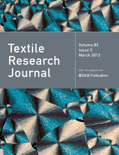
TEXTILE RESEARCH JOURNAL
Shaping the Future of Textile MaterialsTEXTILE RESEARCH JOURNAL, published by SAGE PUBLICATIONS LTD, is a premier academic journal dedicated to the field of textile and materials science, specifically focusing on advances in chemical engineering and polymer technology. With an impressive history dating back to 1931, this journal has continually adapted to the evolving landscape of textile research, aligning its objectives with the latest scientific developments and practical applications. Ranked in the Q2 category for both Chemical Engineering (miscellaneous) and Polymers and Plastics in the 2023 Scopus rankings, the journal serves as a critical platform for disseminating innovative research and groundbreaking methodologies, appealing to researchers, industry professionals, and students alike. While it is not an open-access journal, it remains a vital resource for those seeking high-quality, peer-reviewed literature that bridges the gap between academia and industry. The journal's robust thematic focus and commitment to excellence make it indispensable for anyone looking to stay on the forefront of textile research.
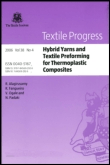
TEXTILE PROGRESS
Exploring the Intersection of Chemistry and FabricTEXTILE PROGRESS is a premier academic journal published by Taylor & Francis Ltd, dedicated to advancing the field of textiles and materials science. With an ISSN of 0040-5167 and an E-ISSN of 1754-2278, this journal serves as a vital resource for researchers and professionals interested in the interplay between chemical engineering, industrial processes, and manufacturing technologies related to textiles. Covering a wide scope of topics from 1969 to 2024, TEXTILE PROGRESS has established its reputation within the scholarly community, consistently achieving a Q2 ranking in various categories including Chemical Engineering, Industrial and Manufacturing Engineering, and Materials Science as of 2023. Its impressive Scopus rankings – 121st in Industrial and Manufacturing Engineering and 101st in General Chemical Engineering – reflect its significance and relevancy in the academic landscape. While not an open-access journal, TEXTILE PROGRESS ensures accessibility through its extensive distribution channels, enabling students, researchers, and professionals alike to benefit from cutting-edge research and developments in textile technology and science.
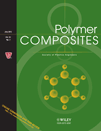
POLYMER COMPOSITES
Elevating Knowledge in Polymer SciencePOLYMER COMPOSITES, published by WILEY, is a leading journal dedicated to advancing the fields of materials science and engineering through the exploration of polymer composite materials. With its foundation dating back to 1980, this esteemed journal has continuously provided a platform for researchers to publish high-quality studies and innovative methodologies in areas such as ceramics, composites, and miscellaneous chemistry. Ranked in the prestigious Q1 quartile for sectors like Polymers and Plastics as well as Materials Chemistry, POLYMER COMPOSITES stands significant within the academic community, holding a notable impact factor that reflects its influence. The journal encompasses a comprehensive range of topics, making it essential reading for professionals, researchers, and students aiming to stay at the forefront of developments in polymer science and composite technologies. Although it does not currently offer Open Access, readers can access its impactful publications through institutional or individual subscriptions, contributing to ongoing advancements in the field and facilitating the exchange of valuable knowledge among scientists and engineers worldwide.
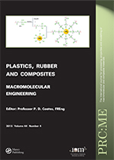
PLASTICS RUBBER AND COMPOSITES
Pioneering Research in Plastics and RubberPLASTICS RUBBER AND COMPOSITES is a leading academic journal published by SAGE Publications Inc., dedicated to advancing the understanding and application of polymers, plastics, and composite materials. With an ISSN of 1465-8011 and an E-ISSN of 1743-2898, this quarterly publication attracts a diverse readership from the fields of ceramics and composites, chemical engineering, materials chemistry, and polymer science. Currently indexed in the Q3 category across multiple relevant domains, the journal provides a platform for high-quality research and innovations that contribute significantly to material science. The journal's commitment to disseminating cutting-edge research makes it a valuable resource for researchers, industry professionals, and students who are eager to explore the latest developments and applications in this dynamic field. Despite its current non-open access status, the journal's rigorous peer-review process ensures that all published articles meet the highest academic standards, thus reinforcing its reputation as an essential source for scholarly work in the materials sector.

INTERNATIONAL JOURNAL OF POLYMER ANALYSIS AND CHARACTERIZATION
Unlocking the potential of polymer analysis.International Journal of Polymer Analysis and Characterization is a distinguished scholarly publication dedicated to the field of polymer science, with a focus on innovative methodologies and significant advances in the analysis and characterization of polymeric materials. Published by Taylor & Francis Ltd in the United Kingdom, this journal serves as a vital resource for researchers, professionals, and students deeply engaged in Analytical Chemistry, Chemical Engineering, and Polymer Science. With a convergence spanning from 1995 to 2024, it holds a Q3 ranking in the 2023 category quartiles for its valuable contributions to the fields of Analytical Chemistry, Chemical Engineering, and Polymers and Plastics. Despite being a non-open access publication, its rigorous peer-review process and comprehensive coverage of current trends ensure that the journal remains a crucial platform for disseminating impactful research. The journal is indexed in various databases, underscoring its relevance and quality in the academic community. Exploratory studies and articles that push the boundaries of polymer analysis find a welcoming home within these pages, making it an essential read for those aiming to stay at the forefront of polymer research.

Fashion and Textiles
Transforming Trends into Academic InsightFashion and Textiles is a distinguished open-access journal published by Springer, focusing on the interdisciplinary realms surrounding fashion, textile innovation, and their socio-cultural implications. Since its inception in 2014, this journal has aimed to foster a deeper understanding of the rapidly evolving landscape of fashion and textiles through rigorous research and scholarly discourse. With an impressive Q1 ranking in Cultural Studies and prominent positions in several other categories, including Marketing and Social Psychology, the journal holds a significant place in its field. The journal, based in Singapore and accessible globally, provides authors and readers with a platform for high-quality research exchanges that influence both academia and industry practices. Open access since its launch, it has proven to be an essential resource for researchers, practitioners, and students who seek to contribute to and engage with the latest trends and developments in fashion and textiles.

INDIAN JOURNAL OF FIBRE & TEXTILE RESEARCH
Empowering researchers to shape the future of textile engineering.INDIAN JOURNAL OF FIBRE & TEXTILE RESEARCH (ISSN: 0971-0426, E-ISSN: 0975-1025) is a leading platform dedicated to advancing the field of textile research and innovation. Published by the NATIONAL INSTITUTE OF SCIENCE COMMUNICATION-NISCAIR in India, this open access journal has been fostering knowledge sharing since its establishment in 2006. With a broad scope encompassing Chemical Engineering, Environmental Science, and Materials Science, the journal's convergence from 1990 to 2024 highlights its commitment to ongoing academic dialogue. Currently categorized as Q3 in several disciplines, including Chemical Engineering and Environmental Science, it provides critical insights into contemporary challenges and developments. The journal's Scopus rankings further illustrate its influence within the research community, making it an essential resource for researchers, professionals, and students interested in textile technology and its intersections with sustainable practices. By fostering a collaborative environment for sharing pioneering research, the INDIAN JOURNAL OF FIBRE & TEXTILE RESEARCH stands as a vital conduit for scholarly communication in the textile sector.